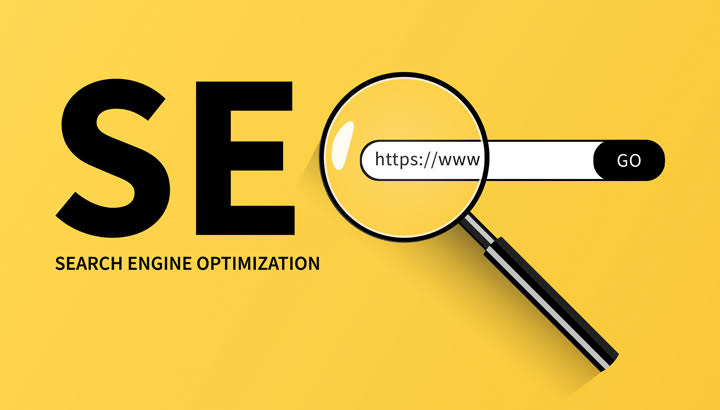Achieving SEO success requires more than just basic keyword optimization—it demands the implementation of effective techniques that elevate your website’s visibility and performance. By using proven methods and strategies, businesses can move up the ranks on search engines, increase organic traffic, and ultimately improve conversion rates. Understanding and applying SEO success stories can offer invaluable insights into what truly works. In this article, we’ll explore some essential SEO techniques that can lead to lasting improvements in your website’s ranking and online presence.
SEO is an ongoing process that demands careful attention to detail and adaptability to evolving trends. As search engines continue to refine their algorithms, staying ahead requires a multifaceted approach. Let’s break down some key techniques that contribute to SEO success, and how you can apply them to your business.
Core SEO Techniques for Effective Online Growth
1. Comprehensive Keyword Research
At the heart of every successful SEO campaign is thorough keyword research. To ensure that you are targeting the right audience, it’s crucial to identify relevant keywords that your customers are searching for. Tools like Google Keyword Planner, Ahrefs, and SEMrush can help you discover high-traffic, low-competition keywords. By integrating these keywords strategically into your content, product descriptions, and blog posts, you increase your chances of ranking higher in search engine results.
But it’s not just about finding the most popular keywords; it’s about targeting the ones that align with your business goals and user intent. Long-tail keywords, for instance, are often more effective as they indicate a stronger intent to make a purchase or seek information.
2. On-Page SEO Optimization
On-page SEO refers to optimizing the content and structure of individual web pages to improve their rankings. This includes elements such as title tags, meta descriptions, headers, and URL structure. Each of these factors plays a critical role in telling search engines what your page is about and how relevant it is to specific search queries.
- Title Tags and Meta Descriptions: Craft concise, compelling title tags and meta descriptions that include your target keywords. These elements are often the first impression users get of your site in search results, so make them count.
- URL Structure: Create clean, readable URLs that are optimized for SEO. Avoid complex URLs with unnecessary parameters, and instead, use keywords that reflect the content of the page.
- Header Tags: Properly use header tags (H1, H2, etc.) to structure your content and make it easier for both users and search engines to navigate.
By paying attention to these on-page factors, you can significantly boost your site’s SEO performance and improve user experience.
3. Mobile Optimization
With more people accessing websites on mobile devices than ever before, ensuring your website is mobile-friendly is crucial for SEO. Google has even implemented mobile-first indexing, which means it predominantly uses the mobile version of your site for ranking purposes.
Make sure your website is fully responsive, meaning it adjusts to any screen size without losing functionality. Additionally, mobile optimization involves improving page load speeds, ensuring easy navigation, and avoiding intrusive pop-ups. Sites that load quickly and provide a seamless experience for mobile users are more likely to rank well and retain visitors.
4. Content Creation and Marketing
High-quality content is king in the world of SEO. Regularly publishing valuable, informative, and engaging content not only keeps your audience engaged but also signals to search engines that your website is authoritative and relevant.
Content creation should go beyond just writing blog posts. It includes videos, infographics, podcasts, case studies, and other forms of multimedia that appeal to different types of users. A well-rounded content marketing strategy allows you to target a wide range of keywords while also providing value to your audience.
5. Building High-Quality Backlinks
Backlinks from authoritative, relevant websites remain one of the strongest ranking signals for search engines. Building a solid backlink profile involves acquiring links from reputable sources within your industry. This can be done through guest posting, collaborations, influencer outreach, and creating content that naturally attracts links.
However, not all backlinks are equal. Quality is more important than quantity. A few high-authority backlinks from relevant websites are far more valuable than dozens of low-quality, spammy links. Backlink building requires a strategy that focuses on genuine, valuable partnerships.
6. User Experience (UX) Design
User experience is a key factor in SEO success. Search engines prioritize websites that offer great user experiences, which include easy navigation, fast loading times, and mobile-friendliness. Improving UX can also reduce your bounce rate and increase the average time users spend on your site—both of which are positive ranking signals.
To optimize for UX, focus on creating a clean, intuitive site design. Keep your website’s navigation simple and easy to understand, and ensure that users can easily find what they’re looking for. Regularly test your site on different devices and browsers to ensure it functions flawlessly for all users.
Case Study: Boosting Traffic for a Local Retailer
A local home goods store was struggling to stand out in a competitive online market. Their website had decent traffic but wasn’t converting visitors into sales, and they were buried under a pile of competitor websites in search rankings. To improve their online presence, they decided to implement a comprehensive SEO strategy.
Here’s what they did:
- Keyword Research: They started by conducting thorough keyword research to identify terms like “affordable home decor in [city]” and “modern furniture for sale online.” These keywords helped target local customers and the right audience.
- On-Page Optimization: They optimized their website’s title tags, meta descriptions, and headers with local keywords and product-specific terms.
- Mobile Optimization: The store redesigned its website to be fully responsive, ensuring that it worked seamlessly on mobile devices.
- Content Creation: The team started a blog featuring home decor tips, furniture care advice, and customer stories, all optimized for SEO.
- Backlink Building: They reached out to local influencers and bloggers to get featured in articles and linked back to their website.
After six months of consistently applying these Mastering SEO techniques, the home goods store saw a 60% increase in organic traffic, a 35% increase in local search rankings, and a significant improvement in conversion rates. This case highlights how an effective SEO strategy, tailored to a specific audience, can lead to meaningful results.
Conclusion
Mastering effective SEO techniques is essential for businesses that want to thrive in the digital age. From keyword research to mobile optimization, and from content marketing to user experience design, each element plays a crucial role in improving search engine rankings. By continuously tracking and refining your SEO efforts, you can achieve sustainable growth and stand out in a competitive online landscape. Just like the SEO success stories that have been shared, with the right strategies in place, your business can reach new heights and achieve long-term success.
Read also: Pondershort.com: Discover the Art of Micro-Content Creation




Pingback: SFValleyWebDesigns: Crafting Digital Excellence in the San Fernando Valley - Tech Wega
Pingback: SEO for SaaS: The Ultimate Guide to Rank Higher with RankStar - Tech Wega